Another scandal involved corked bats. Filling the bat with cork made the bat lighter, allowing for quicker bat speed and also gave some extra spring to the ball off the bat. There have been recent experiments that said the cork actually absorbs the force of the pitch as opposed to bouncing it as previously assumed. Either way it is still illegal to use a corked bat. Billy Hatcher of the Astros got caught red handed. When the barrel of his bat broke in a 1987 game, cork exploded all over the field. Hatcher was immediately ejected from the game and suspended for 10 games. Hatcher didn't hesitate in shifting the blame. He pointed to a teammate and said he had borrowed the bat. According to Hatcher he had no idea it was corked. Hatcher was the only player to get suspended in the 1980's but he was definitely not the only one using this practice. Every time a guy who was "not a home run hitter" knocked one out of the park the crowd would yell to check his bat.
Bats were not the only thing escalating home runs in the 1980's. 1987 was known as the year of the Rabbit Ball because the ball was jumping out of the park at an alarming rate. The leagues swore that there had been no change in the manufacturing process and the balls were the same. There had only once before been an offensive power swing this drastic. In the early 1920's when the league outlawed spitballs, trick deliveries or any use of foreign substance on the ball.and at the same time demanded that umpires put a new ball in play any time a ball was slightly scuffed, marked or dirtied. This ended what was known as the dead ball era.
There were heartbreaking stories: Donnie Moore, the Angels pitcher who gave up a big playoff home run to Dave Henderson, was unable to recover from the loss. He was devastated at having cost the Angels their chance at the World Series. He eventually committed suicide.
Pete Rose was caught betting against his team and was banned for life, forever locking one of the best all around players in history out of the Hall of Fame. As the manager Rose had plenty of ways to influence the outcome of a game and his teams finished in second place every year, less than ten games out of first. The scandal was eventually exposed by A. Bartlett Giamatti, the new commissioner. Giamatti did not revel in the decision and almost seemed to suffer more over the ruling than Rose initially. The strain was too much for Giamatti. After almost exactly one year as commissioner, Giamatti died of a heart attack.
There was a true disaster: The 1989 World Series was interrupted when an earthquake shook the bay area collapsing parts of the Bay Bridge and delaying the A's inevitable win. The delay and concern over the state of the bay area overshadowed the initial excitement of the A's-Giants match up. It was a match up that brought back great memories in World Series history. The A's-Giants had met previously in 1905, 1911 and 1913 and the fourth installment looked like it would be a great series. It wasn't, although it did have some great moments. The A's won 4 straight.
There was a bizarre year in 1981 where the season was interrupted by a player strike. The teams in first place at the time of the strike in mid June were declared first half winners and the teams in first place at the end of the second half, which started in August, were declared winners of the second half. For the first time in history, there was more than one round in league playoffs. The Dodgers eventually beat the Yankees in the World Series. Unfortunately, the Reds, who had the best overall record in baseball (combined first and second half) didn't lead the division in either half and missed the playoffs.
Of course, just like today, the media loved to focus on the negative and ignore the positives.
The 1980's was a great time to be a fan of almost any team. In the AL East, every team except the Indians won the division at least once during the decade and in the AL West every team but the Rangers and Mariners won the division at least once. In 1980 (Phillies), 1985 (Royals) and 1987 (Twins) organizations won their first ever World Series. The Padres, Astros, Blue Jays, Brewers and Expos reached the playoffs for the first time in their history. Only the Dodgers (1981 and 1988) won more than one World Series in the decade. Not only did no one win back to back World Series, but after the 1970's where the World Series seemed to always be between the same few teams, no team represented their league twice in a row until the A's made the 1988 and 1989 World Series.
Several organizations experienced the highest of highs and the lowest of lows. The Blue Jays reached the playoffs for the first time in 1985 and jumped out to a 3 games to 1 lead over the Royals. They then collapsed and lost the series. They looked strong in 1987 and led the division by 3.5 games with only seven left to play. They lost their final seven games (including four to the eventual division champion Tigers) and were passed by Detroit. The Angels made the playoffs in 1982 and 1986. Both times they were one game away from advancing to the World Series but couldn't quite get there. The 1986 Red Sox came back and beat the Angels, they then came up short in one of the classic World Series of all time.
The Orioles won the World Series in 1983 then saw a steady decline, bottoming out with the 1988 team which lost their first 21 games. They rallied in 1989 to lead the AL East nearly all year before collapsing and losing to Toronto on the last day of the year.
The Fall Classics that were played between 1980 and 1989 were often true classics. 1982, 1985, 1986 and 1987 all went the full 7 games. 1980 and 1981 went six games. The Dodgers-Yankees renewed their rivalry in 1981 and St.Louis ignited a new rivalry with the Dodgers with a classic 1985 NLCS. The World Series also saw some of the most memorable World Series moments with Kirk Gibson making himself a legend and Bill Buckner making himself the biggest scapegoat in history.
There was also the heartwarming story of Jim Abbott. Jim Abbott was a left handed pitcher. He could throw hard and throw accurately but he was missing something that every other pitcher in the league had. He was missing a right hand. He never allowed it to slow him down and was able to develop a unique pitching motion that allowed him to throw, put his glove on his pitching hand, field a ball with the glove, switch it to his throwing hand and throw out a runner before you even knew what had happened. The best part of Abbott's story is that he was truly a great pitcher. He even pitched a no-hitter.
Directly in the middle of the decade is one of the greatest teams that you probably didn't know was great. The 1984 Tigers. Led by Alan Trammell, Lou Whitaker, Chet Lemon, Lance Parrish, Kirk Gibson, Jack Morris and Frank Tanana the Tigers jumped out to a 35-5 start, easily the best first 40 games of all time. The Tigers never slowed down. They raced through the regular season, eased past the Royals in the ALCS and destroyed the Padres in the World Series. You'll hear more about them a little farther down.
Although the names of Mike Schmidt, Dwight Gooden, George Brett, Jose Canseco, Pete Rose, Don Mattingly, Dave Winfield and Jim Rice will be the names that are remembered thirty, forty, fifty years from now (or more), every decade has tremendously talented, successful players who make wonderful contributions to the success of their teams, organizations and the league as a whole. Unfortunately many of the players who fall into this category will be forgotten, overlooked and generally ignored. Here are 15 players* from the decade you may not remember but you definitely should:
Catcher:
Mike Scioscia
Career Teams: Los Angeles Dodgers (1980-1992)
All Star Appearances: 1989 and 1990
MVP Voting: 1985 (18th)
Current fans of the Angels recognize Mike Scioscia as the most successful manager in the team's history. Current fans of the Dodgers recognize Mike Scioscia as the team's Catcher who should have been their manager if the ownership had been smart enough to hire him. Few remember the talent that Scioscia displayed behind the plate. He never won an MVP award or Gold Glove. He only made two All Star teams but should have made more. Scioscia handled the pitching staff of the Dodgers (Hershiser, Valenzuela, Don Sutton, Jerry Reuss and many more) the same way he has handled the Angels pitching staff for the past decade. Scioscia sees the game and can anticipate the game better than most people understand. Scioscia played a huge part in the Dodgers 1988 World Series run. Not always known as a home run hitter, Scioscia hit a huge game tying home run in the NLCS against the Mets. He only played in three games in the World Series due to injury but made several outstanding defensive plays to help the Dodgers stun the heavily favored A's. Scioscia will not reach the Hall of Fame as a player but if he stays on his current path he may reach it as a manager.
Firstbase:
Will Clark
All Star Appearances: 1988, 1989, 1990, 1991, 1992 and 1994
MVP Voting: 1987 (5th), 1988 (5th), 1989 (2nd), 1991 (4th) and 1994 (15th)
If the early 2000's seemed to be the golden age of firstbasemen, the 1980's was a close second. With Mark Grace, Don Mattingly, Mark McGwire, Fred McGriff and Keith Hernandez in their prime and Willie Stargell, Pete Rose and Tony Perez ending their careers, it was easy for Will Clark to get lost in the shuffle. Clark was often known as "the Thrill" (his home answering machine played B.B.King's "The Thrill Is Gone") but he was also known as the "Natural". It was well known by pitchers that he rarely swung at pitches outside the zone but pitchers didn't seem to get any breaks against him. His signature moment came in the 1989 NLCS against Greg Maddux. Ever wonder why everyone covers their mouths with their gloves when they visit at the mound ? It wasn't always that way. In the top of the fourth inning of Game One the bases were loaded with two outs and the Cubs had shaved the Giants big lead to a slim one run. As Clark stepped into the plate Rick Wrona, the Cubs catcher, went out to talk over how to pitch to Clark. They couldn't try to get him to chase a pitch outside the zone. He wouldn't swing. He would just take the pitches and walk. While these conferences take place many batters take a few practice swings, look down at the thirdbase coach, look in the dugout, joke with the umpire. Clark stared out at the mound and glowered at Maddux as he met with Wrona. He couldn't hear anything above the cheers but he saw Maddux's lips communicate one thing: fastball. The first pitch came in, a fastball, and Clark sent it out just as fast. A grand slam to right field. The Cubs never recovered from the blow and the Giants moved onto their first World Series since 1962. The result of this play: never let the batter see what you're saying.
Secondbase:
Harold Reynolds
Career Teams: Seattle Mariners (1983-1992), Baltimore Orioles (1993) and California Angels (1994)
All Star Appearances: 1987 and 1988
MVP Voting: None
Over the last few weeks you have heard me refer to "baseball graveyards". No better example exists than Seattle in the 1980's. Talents like Jim Presley, Alvin Davis and Mark Langston toiled in vain in the pre-Ken Griffey, Jr. years of Seattle baseball. No one toiled longer or better than Harold Reynolds. The Mariners rarely got out of last place and were not ever competitive. Reynolds was a top of the lineup, "motor" guy who made the Mariners go, although the destination was never a pretty place. During the 1980's Rickey Henderson dominated the league in stolen bases. In 1987, with Rickey suffering from injuries, Reynolds led the league with 60 stolen bases. A few days after the season ended Reynolds was excited to receive a call from Rickey, assuming Rickey wanted to congratulate him for leading the league in steals. Instead Rickey told him he should be embarrassed about leading the league with only 60 steals. Rickey could have done that in half a season. Reynolds was also a great fielder. He won three straight Gold Glove awards. Fans of the game can still see him on MLB Network's nightly coverage of the league. He regularly gives tremendously insightful analysis, fundamental breakdowns and his own philosophy of the game. It would be amazing to think what an impact his baseball mind could have made on a team that made the playoffs.
Jim Gantner
Career Teams: Milwaukee Brewers (1976-1992)
All Star Appearances: None.
MVP Voting: None.
If there was ever a player who starred in obscurity and quietly did his job as the stars took credit, Jim Gantner was that player. In 17 years in Milwaukee Gantner never made an All Star team, never received an MVP vote, never won a Gold Glove, yet he was a key part of the glory days of the Milwaukee franchise. Although Paul Molitor, Robin Yount, Ted Simmons, Gorman Thomas and Teddy Higuera, and later Gary Sheffield and Greg Vaughn, got the headlines, Jim Gantner just kept plugging away. He was a good, versatile fielder, playing every infield position at some point and never making more than 13 errors in a season. Gantner played a big role in Milwaukee's only World Series appearance getting 8 hits including 4 doubles and a triple. In Ganter's final year, as Baltimore collapsed after the All Star break and Toronto thought they were in the clear, Milwaukee took a shot at the Blue Jays. With three games to play Milwaukee trailed Toronto by only two games. Gantner did not have his greatest season in 1992 but he certainly led the team in the clubhouse. Although outside of Milwaukee he is rarely remembered, Brewers fans will never forget his 17 years of service.
Shortstop:
Alan Trammell
All Star Appearances: 1980, 1984, 1985, 1987, 1988 and 1990.
MVP Voting: 1980 (20th), 1981 (21st), 1983 (15th), 1984 (9th), 1987 (2nd), 1988 (7th) and 1990 (19th)
Every World Series winning team of the 1980's (and all but one of the runners up) have at least one player in the Hall of Fame except for the 1984 Tigers. The '84 Tigers are one of the great teams in the history of the sport. They started the season 35-5 and never looked back. He may not have been voted regular season MVP (the team had no shortage of candidates) but he was the World Series MVP. In the ALCS against Kansas City, Trammell hit .364 with a triple, a home run and three RBI. Those are big numbers but his World Series performance made those numbers look weak. He hit .450 with a double, two home runs and 6 RBI and scored 5 runs. He was clearly the World Series MVP as the Tigers destroyed the Padres to win their first World Series since 1968. Trammell was often overshadowed by Shortstops like Ripken, Ozzie Smith, Ozzie Guillen and Tony Fernandez but Ripken always evaluated his own performances based on what Trammell did. If Cal Ripken thinks he needs to be better than you to justify his own value it should be an easy decision that you should be in the Hall of Fame.
Thirdbase:
Carney Lansford
All Star Appearances: 1988
MVP Voting: 1981 (6th), 1982 (32nd) and 1989 (17th)
The Oakland Athletics of the late 1980's and early 1990's had a lineup filled with All Stars, MVP's, Rookies of the Year and future Hall of Fame legends: Walt Weiss, Don Baylor, Rickey Henderson, Mark McGwire, Dave Parker, Tony Phillips, Willie McGee, Harold Baines, Terry Steinbach, Dave Stewart, Dennis Eckersley, Bob Welch and Jose Canseco. Carney Lansford was almost always forgotten in this group. Lansford started his career in California and was a part of the Angels' first playoff team in 1979. The Angels lost to Baltimore in 4 games but Lansford hit .294 and drove in three runs. After a few years in Boston Lansford moved on to Oakland. The A's of the mid 1980's were in transition. A few years after the signing of Lansford, Oakland started a renaissance with three straight Rookies of the Year (Canseco, McGwire and Weiss) and the developing of a great pitching staff. Lansford played a big role in the A's rise to prominence but did not get the recognition he deserved. Players like Lansford are usually called gritty. Lansford's uniform was always dirty, he was constantly picking himself up off the dirt after making a diving stop, throwing from his knees. As the A's won their first World Series since 1974, Lansford played some of the best ball of his career. He hit .455 in the 1989 ALCS against Toronto and followed that up with a .438 World Series as the A's swept Will Clark and the Giants.
Tim Wallach
All Star Appearances: 1984, 1985, 1987 and 1990
MVP Voting: 1987 (4th), 1990 (10th) and 1994 (18th)
Playing thirdbase in the NL during the decade of the 1980's was difficult. You were competing with Mike Schmidt, one of the three greatest thirdbasemen of all time, Graig Nettles, a Yankees legend who moved to San Diego as well as Howard Johnson and Chris Sabo, two rising talents. Playing baseball in Montreal in the 1980's after 1981 was a dead end. As the Expos lost or traded their stars like Andre Dawson and Gary Carter, the middle years of the decade were dark years. Tim Wallach was the quiet star of the organization. Wallach was the one mainstay between the Andre Dawson/Gary Carter years and the development of the younger talent like Marquis Grissom, Delino DeShields and Larry Walker. Wallach made 5 all star games, won three gold gloves and was one of the few players giving the Expos respectability. Wallach exited Montreal in 1993 for the Dodgers and was rejuvenated, helping the Dodgers make the playoffs in 1995 for the first time since 1988. Wallach rarely got the recognition he deserved but would have garnered much more attention had he played somewhere other than Montreal.
Outfield:
Dale Murphy
All Star Appearances: 1980, 1982, 1983, 1984, 1985, 1986, 1987 and 1988
MVP Voting: 1980 (12th), 1982 (1st), 1983 (1st), 1984 (9th), 1985 (7th), 1986 (21st) and 1987 (11th)
It is hard to believe that Dale Murphy doesn't have more people pushing for his inclusion in the Hall of Fame. In fact as I was preparing this article, the ballots for this year's Hall of Fame were released. Mike Ferrin on MLB Network Radio said that he too was surprised that more people do not support Murphy. Ferrin's exact words were "if you would have told me in 1986 that Dale Murphy wasn't in the Hall of Fame I would have said you were nuts." In the ten years between 1980-1989 Murphy received MVP votes in seven seasons, four of those years he was in the top 10 and twice won the award. Most fans who remember the Braves' long stretch of playoff appearances in the 1990's and early 2000's remember hearing how horrible the Braves were before that time. What few people remember is that the Braves were a playoff team in 1982. They were swept out of the playoffs by the eventual World Champion St. Louis Cardinals but Murphy was the man who carried the Braves to a division title by one game over the Dodgers. Murphy won a second MVP award in 1983 as the Braves finished only 3 games behind the Dodgers. On top of his leadership and consistent bat in the Braves lineup, Murphy was a tremendous fielder. He won five consecutive Gold Gloves as an outfielder. As the Braves started to move towards their youth and looked to make room for young players like David Justice, Ron Gant and Deion Sanders, Murphy was traded to the Phillies during 1990. Although Phillies fans were excited to get such a big name, Murphy's best days were over. Injuries and the Phillies own youth movement limited Murphy's playing time and effectiveness. Murphy was known as a very religious, conservative guy who did not drink, smoke or carouse and did not approve of other players who did. As the Phillies started gathering players such as Lenny Dykstra, Darren Daulton, Pete Incaviglia, John Kruk and Mitch Williams, Murphy's personality didn't really fit in. He was moved to the Rockies before the Phillies' magical 1993 season but played sparingly for the expansion Rockies. The only other 2 time MVP of Murphy's stature not in the Hall of Fame is Roger Maris.
Robin Yount
All Star Appearances: 1980, 1982 and 1983
MVP Voting: 1980 (17th), 1981(17th), 1982 (1st), 1983 (18th), 1987 (11th), 1988 and 1989 (1st)
Robin Yount was elected into the Hall of Fame in 1999, so why is he on a list of forgotten players? Because although he reached the hall of fame, if you were not a Brewers fans in the 1980's you may have missed just how good this guy was. The Brewers have had very few eras they could hang their hat on but the Yount/Gantner/Molitor era is the big one, even more so than the Fielder/Braun era that just ended. In the strike shortened season of 1981 the Brewers reached the playoffs for the first time and although Yount had a great season, it would be nothing compared to his 1982 MVP season. As a shortstop (not yet a position associated with offensive prowess), Yount hit .331, led the league in doubles (46), hits (210) and total bases (367). He also hit 29 home runs and stole 14 bases, made the All Star Team and won a Gold Glove. Still, his best moments of the season were yet to come. In the Brewers only World Series appearance Robin Yount hit .414, drove in 6, and had 5 extra base hits (4 doubles and a home run). Few players have ever had a better series on a losing team. Few shortstops on winning teams have had a series that good. A few years later Yount started to develop severe shoulder problems, a major issue for someone who has to make strong throws from Shortstop. So the Brewers moved Yount to the outfield. Yount did just fine in centerfield and in 1989, on a fourth place team, Yount won his second MVP award at a second position (only the second player in history and the first since Hank Greenberg in 1935 and 1940 at Firstbase and Outfield) to win an MVP at two different positions.
Dave Henderson
All Star Appearances: 1991
MVP Voting: 1988 (13th) and 1991 (21st)
Dave Henderson seemed to be everywhere during the playoffs of the late 1980's but always seemed to be the forgotten player. In 1986 the Angels pitchers focused on Boggs, Evans, Rice and Buckner in the ALCS. Yet it was "Hendu" who hit the big home run to steal the series from California and put Boston in position to reach the World Series, it was his only hit in the series. Everyone, casual fan or student of the game, has seen Bill Buckner misplay the ground ball that allowed the Mets to win Game 6 of the 1986 World Series. Few realize that Henderson was the man who put the Red Sox on top in the top of the 10th with another huge home run. Henderson played the beginning of 1987 with the Red Sox but as the year started to unravel Boston tried to quickly rebuild and Henderson was traded to the Giants on September 1 for a player to be named later. He did not make the postseason roster, something the Giants likely regretted in retrospect as they lost to the Cardinals in the NLCS. As a free agent at the end of the season Henderson signed with an Oakland A's team that was looked at as a strong playoff contender with rising superstars Jose Canseco, Mark McGwire, Walt Weiss, Dave Stewart and Terry Steinbach and veteran leaders Dave Parker, Don Baylor, Bob Welch and Dennis Eckersley. It was a crowded team but Henderson quietly made a big impact. He hit .304 and pounded 24 home runs in a gigantic Oakland stadium, scored 100 runs and drove in 94. Just like his stay in Boston, Henderson was best in big situations. During the three years of the Oakland powerhouse of the late 1980's, Henderson hit 4 postseason home runs, 9 postseason doubles, scored 15 runs and knocked in 11 in just 24 postseason games with Oakland. As the team evolved through the playoff drives, players like Harold Baines, Willie Wilson and Rickey Henderson cycled through the clubhouse and continued to get the attention, yet Henderson and Carney Lansford were the two forgotten consistent performers. With his constant energy and unforgettable smile, it was impossible to watch Hendu play and not want to pick up a bat or put on a glove. If anyone ever showed you it was OK to have fun playing ball, this was the guy.
George Bell
All Star Appearances: 1987, 1990 and 1991
MVP Voting: 1984 (19th), 1985 (8th), 1986 (4th), 1987 (1st), 1989 (4th) and 1992 (20th).
The early years of the Blue Jays were not good. There were very few early stars and even fewer successful seasons. George Bell was the organization's first star and he used his gigantic muscles to carry the entire organization on his back. 1980's baseball in Canada was a race to see which Canadian team could win a World Series first. The Expos struck playoff gold first, reaching the NLCS in 1981. The Blue Jays took a little longer to counterstrike but in 1985, led by Bell, the Blue Jays advanced to within one game of the World Series. As the Jays jumped out to a 3 games to 1 lead over Kansas City, Bell hit .321, scored 4 times and hit 3 doubles. Toronto fell back in the standings in 1986 but Bell continued to carry the team. As the 1987 season developed it appeared that Toronto was a strong World Series contender and led the AL East. Bell was the MVP of the season hitting .309 and driving in 134 runs with 47 Home Runs. Although it may seem silly to current fans, in the 1970's and 1980's hitting this close to 50 home runs was a major achievement. Few players had gotten this close to it since Roger Maris set the record. 1988 was an off year for Bell (.269 and 24 HR). 1989 saw a resurgence as the Blue Jays won a great race with the Red Sox to reach the ALCS. Bell struggled in the playoffs, hitting only .200, although he did hit a home run in the final game of the series. The 1990 season saw another close Red Sox-Blue Jays battle but Bell seemed to play his way out of town as rumors swirled about his poor clubhouse attitude. These rumors, poor relations with the Toronto media and lack of fan support led to Bell signing a big Free Agent contract with the Cubs. Chicago fans were excited to get Bell's talent but the love affair ended quickly. Bell did not fit in well in the Cubs clubhouse and the Cubs faithful were getting tired of waiting for a World Series. Bell was traded to the crosstown rival White Sox before the 1992 season started. The Cubs got a pitcher named Ken Patterson and a young outfielder named Sammy Sosa. It originally appeared that the White Sox got the better of the deal as Bell hit 25 HR and drove in 115 in his first year. It is hard to tell why but Bell never could seem to regain the form that made him one of the best players of the decade. Bell also falls into another dubious category for Phillies fans. He is one of the long list of "could have been" players the Phillies let get away in the early 1980's as their playoff teams aged. Bell was originally drafted by the Phillies in 1978 but was claimed by Toronto as a Rule 5 draft pick in 1980.
Starting Pitcher:
Mike Scott
All Star Appearances: 1986, 1987 and 1989
MVP Voting: 1987 (10th) and 1989 (15th)
Cy Young Voting: 1986 (1st), 1987 (7th) and 1989 (2nd)
Mike Scott had an amazing 1986 season. He was nearly unbeatable going 18-10 with 306 strikeouts and a 2.22 ERA. He finally mastered the split finger fastball, although if you ask the 1986 Mets he was scuffing the ball. Scott dominated the Mets in the NLCS, winning both games he pitched in and allowing only 1 run in 18 innings but Davey Johnson was positive Scott was doctoring the ball, causing it to make odd dips and twists. The Mets gathered a hand full of balls that Scott allegedly scuffed during the playoffs and sent them to the National League office. Nothing ever came of it. Scott fell off in 1987 and 1988 as the Astros started to break apart. Scott had one last great season in 1989 going 20-10 and a 3.10 ERA. Somehow, the 20 wins were not enough to win his second Cy Young Award as Mark Davis, a relief pitcher for the Padres, beat him out easily.
Tom Browning
All Star Appearances: 1991
MVP Voting: None.
Cy Young Voting: 1985 (6th)
As a rookie Tom Browning won 20 games yet came in second in the Rookie of the Year to Vince Coleman and sixth in the Cy Young voting. Browning had moments of being unhittable, routinely. In June of 1988 he came within one out of a perfect game, Tony Gwynn broke it up with a single. It was a heartbreaking moment. Browning kept pitching at a high level and in September of 1988 he pitched one of the greatest games in history: a perfect game where he used only 100 pitches (72 strikes) and not one batter got even 3 balls into an at bat. Just short of a year later Browning was almost unhittable again. He took another perfect game into the 9th inning against the Phillies when Dickie Thon led off the ninth with a single. Amazingly, Browning got 0 Cy Young votes that year. If Pete Rose wasn't betting against his team, Browning may have had more postseason experience during his prime. In the first full year after the Pete Rose scandal the Reds won the World Series. Browning gave up three HR in the postseason but won two of his three games. Browning started 1991 on a 10-2 stretch and made his only All Star team but things went down hill from there and bottomed out in 1994. During a 1994 start Browning's arm snapped, literally, in mid pitch. In baseball's version of the Joe Theisman injury, Browning's shoulder let out a loud pop and his arm separated from the shoulder socket. Lucky to have mobility in his joint at all, Browning tried a come back with the Royals in 1995 but his career was over. One of the best pitchers in the decade had the poor luck of playing for a crooked manager and suffering a gruesome injury.
Closer:
Dave Righetti
Career Teams: New York Yankees (1979, 1981-1990), San Francisco Giants (1991-1993), Oakland Athletics (1994), Toronto Blue Jays (1994) and Chicago White Sox (1995)
All Star Appearances: 1986 and 1987
MVP Voting: 1986 (10th)
Cy Young Voting: 1986 (4th)
Fans of the San Francisco Giants will recognize Dave Righetti as the guy who goes out to the mound when Barry Zito or Tim Lincecum is having a bad night. Yankees fans will recognize Righetti as their best closer until Mariano Rivera came along. Righetti entered the league in 1981 as a starting pitcher and won Rookie of the Year with an 8-4 record and 2.02 ERA. In the bizarre 1981 season the Yankees reached the World Series but lost to the Dodgers. Steinbrenner came out and ridiculed his team for losing the World Series but it would be hard to blame Righetti. He won three games in the playoffs and although he only lasted 2 innings in his only World Series appearance, he got a no decision. After three years as a starter, including a 1983 no-hitter against the Red Sox, "Rags" got moved to the closer position. As good as he was in a starting role, he was even better as a closer. His best year was 1986 when he set a major league record by saving 46 games, went 8-8, walked only 35 and struck out 83 with a 2.45 ERA. As Steinbrenner tired of the large payroll and small results, the stars were shipped off, along with many prospects,and the Yankees went into a full rebuilding phase. Righetti signed with the Giants after the 1990 season. Righetti's first season with San Francisco was spectacular, saving 24 games, yet as the years went on his appearances diminished. Righetti is not a Hall of Fame pitcher but he has certainly mentored several potential hall of famers in San Francisco.
Designated Hitter:
Don Baylor
Career Teams: Baltimore Orioles (1970-1975), Oakland Athletics (1976), California Angels (1977-1982), New York Yankees (1983-1985), Boston Red Sox (1986-1987), Minnesota Twins (1987), Oakland Athletics (1988)
All Star Appearances: 1979
MVP Voting: 1975 (20th), 1978 (7th), 1979 (1st), 1982 (23rd) and 1986 (13th)
Don Baylor's career began before the Designated Hitter existed. When the position was instituted it would have been a good idea for his teams to utilize Baylor in this position more often. That is not to say Baylor was a poor fielder, playing mostly outfield and some firstbase he never made more than 9 errors in a season, Baylor was a steady, strong fielder who rarely made mental mistakes. When his teams finally figured out what a DH should be, Baylor was the ideal man. Similar to Mariano Duncan in the 1990's, Baylor's teams seemed to always be in the playoffs and Baylor always seemed to be the unknown, unsung hero. Baylor made the playoffs during his stops in Baltimore, California, Boston, Minnesota and Oakland. 1979 was his best season as he led California to the playoffs for the first time in their history. Baylor hit .296 and hit 36 HR that year while leading the league in RBI (139) and runs scored (120), and striking out only 51 times. Baylor was also a big reason the Angels reached the playoffs again in 1982. Baylor helped the Angels jump out to a big 2 games to 0 (in a best of 5 series) against Milwaukee led in the best of 5 ALCS. In the first 2 games Baylor went 3-6 (including a triple),scored 3 times and drove in 5. As the Brewers caught fire Baylor did everything he could to get the Angels to the promised land. In the final three losses Baylor was only 3-11 but his three hits included a double and a Grand Slam that drove in 4 of the Angels 5 runs in a 9-5 Game 4 loss. As I mentioned, Baylor's teams were almost always in the playoffs. Baylor played on the infamous 1986 Red Sox team and played a big part in defeating his old team the Angels including a 2 run HR in the top of the ninth that brought the Red Sox to within one run and knocked Mike Witt out of the game eventually bringing in Donnie Moore. The 1986 Red Sox did not win the World Series and Baylor was sent to Minnesota in a trade deadline deal that helped form one of the great moments in Twins history as the Twins won their first World Series. Baylor was a free agent after the World Series and signed with a young Oakland team that many felt had one of the best collections of talent in history. With young talent like McGwire, Canseco, Terry Steinbach and Walt Weiss, Baylor was the steadying influence in the clubhouse, although the 1988 A's were stunned by Mike Scioscia and the Dodgers in Baylor's last season. Baylor became the first ever manager of the Colorado Rockies and won Manager of the Year as he led the expansion team to the playoffs in only their third year in 1995. Baylor also managed the Cubs from 2000-2002 but for some reason has not been given another chance to manage.
* Author's Note: Just as in the last few week, and as may be seen in the next few weeks as we move through this series of articles, I did my best to keep this to one player per position, however, the farther we move from these eras, the easier it is to forget these types of players (and even some hall of fame players). It is important to remember as we follow the sport that the superstars are not the only ones making contributions to the success of a team. This is not a comprehensive list of players who fall into this category from this era, it is simply my choice of players who best represented their position and have become forgotten. Your list is probably different. Email me yours or leave a comment.
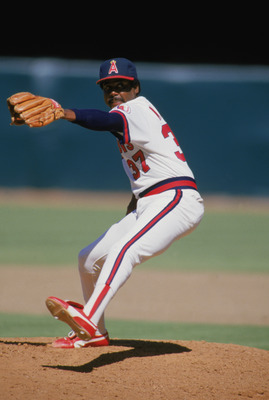
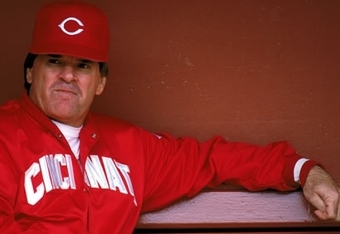


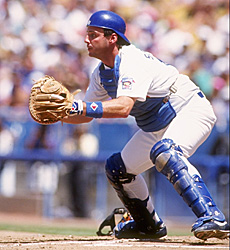
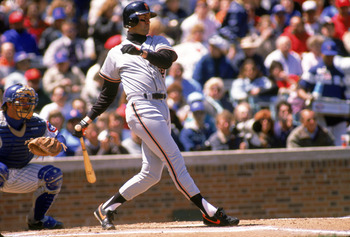
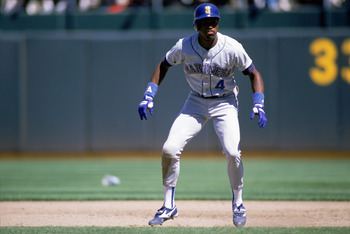
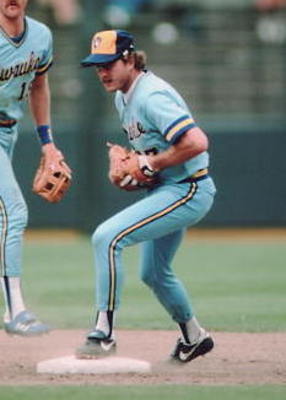
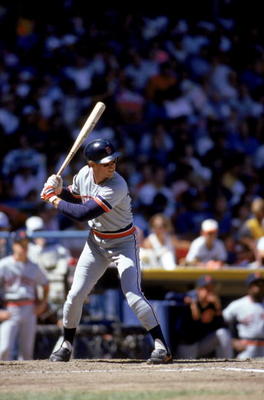

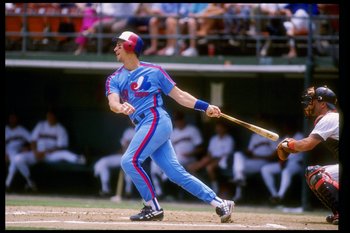
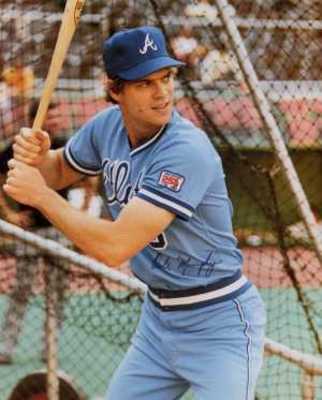
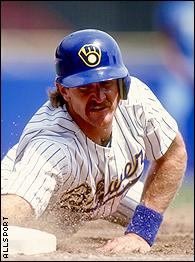
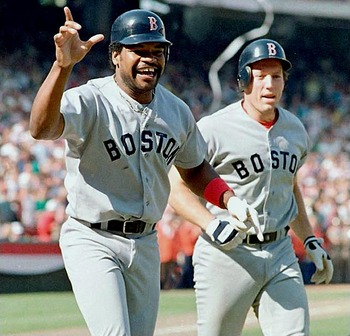
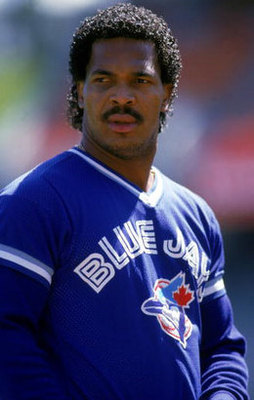
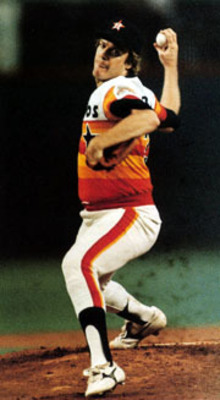


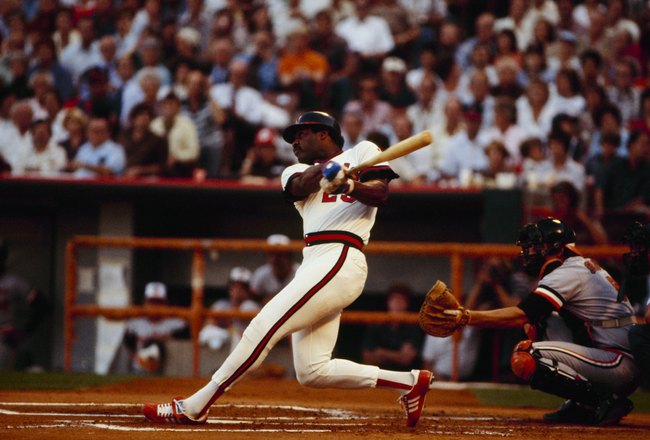
I didn't realize Mike Scioscia was a Dodger player before. I also didn't realize that Roger Maris wasn't in the hall of fame already. You would think that all those old time players would already be in there. That Browning injury sounded nasty. Was it televised?
ReplyDeleteThanks for reading and always leaving comments. Mike Scioscia was a great catcher for the Dodgers and played on both the 1981 and 1988 championships. Roger Maris was a great player and I am also shocked that he was never put in the hall of fame, even with the Veteran's Comittee voting on older players. The Tom Browning injury was likely broadcast on the local Cincinatti tv station. Unfortunately (or fortunately) I wasn't able to find a video of the injury.
ReplyDeletelike always, nice post mike. not only did i learn about some forgotten players, i also now have my new alias or pen-name: CHET LEMON! best name ever! im going to start using that when starbucks asks for my name to write on my latte cup...honorable mention goes to carney lansford. carney? classic! and my vote for best hair-do of the 1980s: george bell's jheri curl!
ReplyDeleteGlad to know that baseball history can help you in your private life. Some other great aliases from baseball history that might help are Luke Easter, Don Money and Dave Cash.
DeleteEnjoy reliving the past. In the 80's I was raising 3 kids so I had forgotten a lot. I do remember the tigers going 35-5. Not only were they winning, they were beating the twins by scores of 18-5 and 17-2.
ReplyDeleteNever knew about that story on Will Clark on how he read the pitchers' lips.
I enjoy Harold Reynolds on MLB.
If O. Smith is in the HOF then Trammell should be. He just can't do a back flip.
TJD
Raising 3 kids is no excuse for missing baseball. The youngest one of the three probably feels ashamed knowing he kept you from seeing all this great stuff.
DeleteSpeaking of baseball names; Was Rollie Fingers related to Bill Hands? LOL.
ReplyDeleteTJD